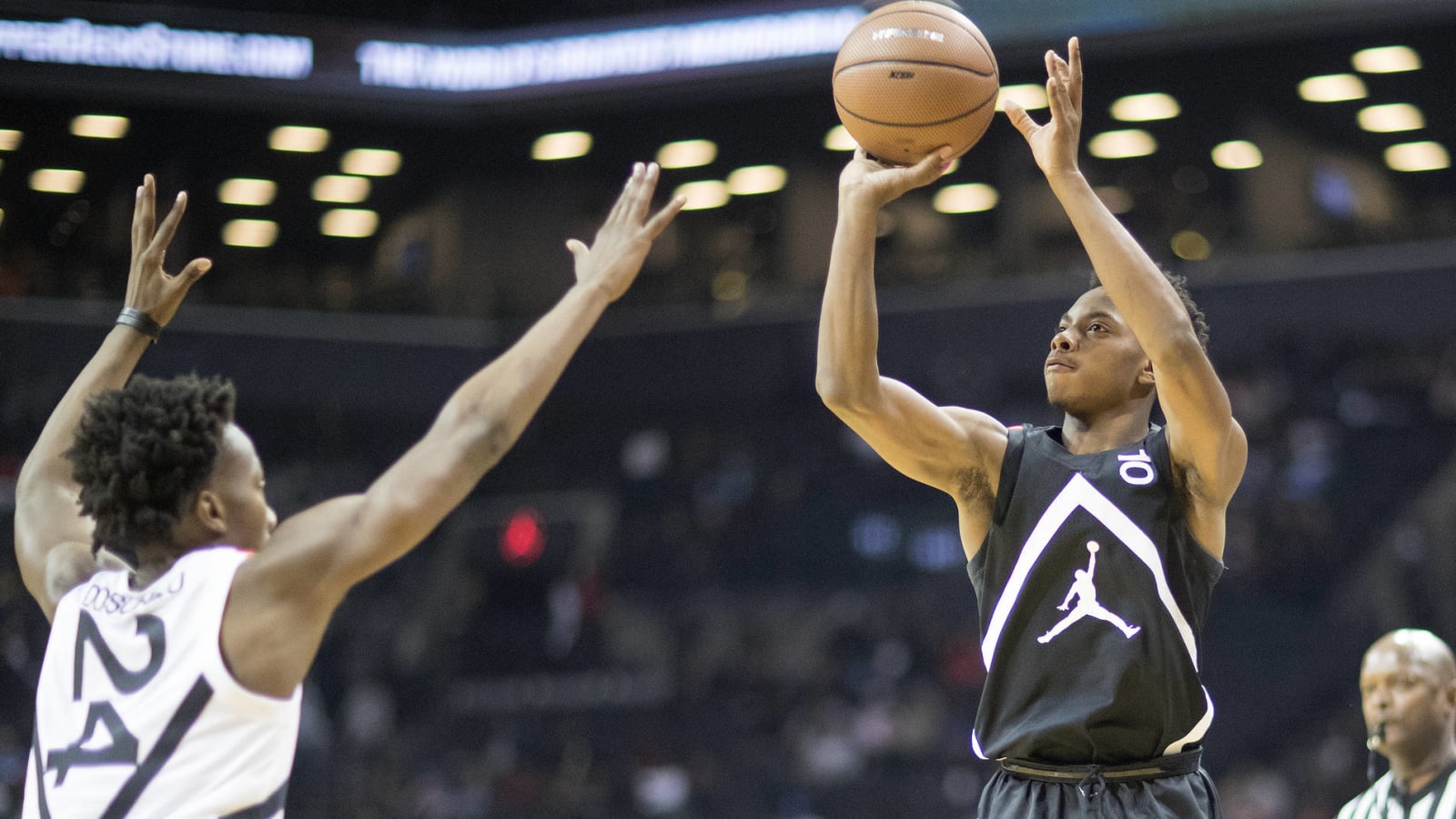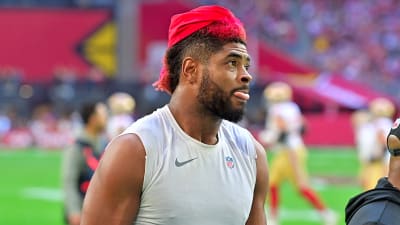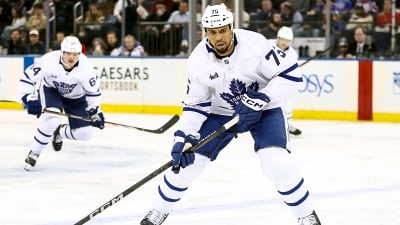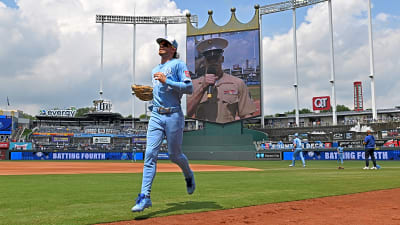
Analyzing Vanderbilt's Darius Garland, the No. 3 NBA Draft prospect
Yardbarker NBA draft analyst Brett Koremenos offers in-depth assessments of the top-five prospects leading into the draft on June 20. Here's his analysis of Vanderbilt's Darius Garland, Yardbarker's No. 5 draft prospect.
All prospect reports: No. 1: Zion Williamson | No. 2: Ja Morant | No. 3 Darius Garland | No. 4 De'Andre Hunter | No. 5 Jaxson Hayes | More NBA Draft coverage
DRAFT NIGHT AGE: 19
HEIGHT: 6-2 | WEIGHT: 175 | WINGSPAN: 6-5
2018-19 RAW NUMBERS (Totals per game)
GP | MIN | PTS | REB | STL | AST | TO
5 27.8 16.2 3.8 0.8 2.6 3.0
His game
A dozen years ago, a 6-foot-2 teenager entering the professional ranks with a score-first mentality would be considered, at best, a combo guard. In today’s NBA, where Damian Lillard, Steph Curry and Russell Westbrook have been catalysts for change at the position, Garland is without a doubt a point guard.
Although his time at Vanderbilt ended after just five games because of a meniscus tear, Garland gave us glimpses of an impressive skill set. He combines an airtight handle with a shifty style that can leave defenders spinning like a top. Also blessed with good first-step quickness, Garland should be difficult to keep out of dangerous areas at the NBA level.
Where Garland can get on the floor won’t matter as much as what he does when he’s there. Garland isn’t anywhere near the class of an above-the-rim finisher like Westbrook. He instead relies on sneaky flips, flicks and extended layups -- tricky shots that require a lot of skill to make consistently. Garland’s finishing leaves something to be desired, but that doesn’t mean he won't improve.
Garland’s main scoring weapon is his jumper. Any stats from just a handful of games should always ring the “small-sample size” alarm bell. In the case of his jump shot, Garland's 2018-19 cameo at the Division I level certainly gives reason for optimism.
Garland excels as a three-point shooter, knocking down nearly half (47.8 percent) of his 23 attempts last season. Garland also made 55.9 percent of all jumpers -- both catch-and-shoot and off-the-dribble -- that he took in 2018-19. That's an elite mark no matter the level.
Perhaps most impressively, Garland ranked in the top 1 percent of all college basketball players shooting off the dribble. He posted an absurd return of 1.348 points per possession (PPP) when letting it fly off the bounce. To put that number into perspective, Steph Curry was the best in the NBA at such shots, posting a 2018-19 mark of 1.164 PPP. Again, producing such a mark in just a handful of college games guarantees nothing. It definitely doesn’t mean Garland has a better jump shot than perhaps the best shooter in the world. It mostly hints that Garland could step onto an NBA floor with an elite skill.
On the other end of the floor, Garland’s slight frame will present problems for him. Bigger guards (like Westbrook) will be able to bully him on drives and post-ups. Switching will be a non-starter as Garland will get buried in the paint by taller, stronger players who take him to the block. For the most part, Garland’s quick feet should help him contain most NBA guards. It may take a few years for him to hold his own against his more physical counterparts.

Number that matters: 139
This is the total number of minutes Garland played in his lone season of college basketball. It essentially puts an asterisk by any stat used to measure his potential impact. Even more frustrating for those evaluating Garland is that the games he did play were against Winthrop, USC, Alcorn State, Liberty and Kent State. None of those teams finished in the Top 50 of Kenpom.com’s power rankings and only one (USC) was from a BCS conference.
Predicting how college basketball players will play professionally is hard enough. The fact that Garland only played a handful of games against middling competition almost throws any objective measurements out the window. In a lot of ways, evaluating Garland is like scouting a player coming straight from high school. NBA teams will most likely rely quite a bit on feedback from their scouts or executives who have watched him play in high school, at prestigious summer camps or on the AAU circuit. This also means that how Garland looks in pre-draft workouts for interested teams will carry a lot more weight than teams would like -- there’s just no baseline for comparison.
This doesn’t mean Garland is a fraud or that the glimpses he showed in his fleeting time in college basketball aren’t real. Millions of dollars and a high pick will be invested in Garland. You want as much info as you can get.

Number to ignore: 25.7
This is Garland’s underwhelming assist percentage, a number meant to reflect the percentage of made field goals a player assists while he’s on the floor. Garland lent a helping hand just once out of every four field goals his teammates made in 2018-19. For some players, having such a limited play-making impact when they’re on the floor could be shrugged off depending on their role. Garland, however, has no such excuses. He was the engine that powered Vanderbilt’s offense when he was healthy.
For comparison’s sake, fellow lottery pick Ja Morant finished first in the country with an assist percentage of 51.8 -- meaning over half the shots his teammates put through the hoop were off a pass from the talented Murray State guard. Especially when compared to Morant, Garland’s play-making chops look pedestrian. This, however, is where small sample size actually works in his favor.
Over the course of what was essentially four games (Garland only played two minutes in his last game against Kent State), luck could have an outsized role. Go through the film of Garland’s passes and you’ll see him create quality looks that just didn’t go down. Over the course of a 35-game season, the ability of Garland’s teammates to convert his passes into points would likely even out. Over just four games, it’s hard to tell how unlucky Garland was in that regard.
If a few more shots went in during that stretch, Garland’s assist percentages would jump closer to Morant’s. Then he'd look like an average to above-average passer instead of a poor one. It’s why, like virtually all of Garland’s college numbers, we can’t use his assist percentage as an ironclad predictor of his true play-making skill.

His comps: Luke Ridnour
It’s easy to have Garland’s combination of a shifty handle and wicked jump shot evoke the name of Kyrie Irving, another enticing prospect who lost a chunk of his lone season in college basketball to injury. The problem with the Irving comparison is that the odds are against any 19-year-old becoming one of the game’s preeminent stars. After all, lottery picks like Garland have a much greater chance of turning into a solid starter or role player than they do becoming the next Kyrie Irving.
A much safer comparison would be someone like Luke Ridnour, who, like Garland, was a shifty 6-foot-2 guard with a slight frame and accurate jump shot. Drafted 14th overall in 2003, RIdnour was a former McDonald’s All-American and won Pac-12 Player of the Year during his final season at Oregon -- not a bad resume. Ridnour never became an NBA all-star, but he did carve out a successful 12-year career as a solid starter and valuable backup.
Garland does have edges over the former NBA veteran, most notably in terms of wingspan (6-5 to 6-3) and acceleration. The similarities, however, are too hard to ignore. A slight frame and underwhelming finishing ability held back Ridnour, who was hardly an elite passer, although he was good at protecting the ball. Garland could easily develop into a better passer than Ridnour.

Building a skill set
Garland must get stronger. He doesn’t necessarily have to look like a bodybuilder overnight, but starting the years-long process of adding strength and stability to his slight frame should be priority No. 1.
On the court, he must improve his decision-making and finishing at the hoop. A combination of Tony Parker’s array of shots around the basket and Irving’s crafty spin finishes would help.
Best-case scenario
Garland’s slight frame doesn’t hold him back physically. The finishing woes clean up as Garland becomes a master at angles and deceptive, below-the-rim finishes. The play-making evolves to a point that defenses must respect Garland's ability to find open teammates. Combine all that with passable defense and the all-star invites should roll in every few seasons.
Worst-case scenario
Garland’s physical attributes never improve, making him a constant target on defense. The play-making proves to be a true weakness, and Garland becomes a one-dimensional scorer overly reliant on his jumper. A Patty Mills-like career is still possible in this scenario, but definitely not much beyond that.
More must-reads:
- 2019 NBA mock draft 4.0: First round
- Analyzing Texas' Jaxson Hayes, the No. 5 NBA Draft prospect
- The 'NBA Rookies of the Year' quiz
Breaking News
Trending News
Customize Your Newsletter
 +
+
Get the latest news and rumors, customized to your favorite sports and teams. Emailed daily. Always free!








